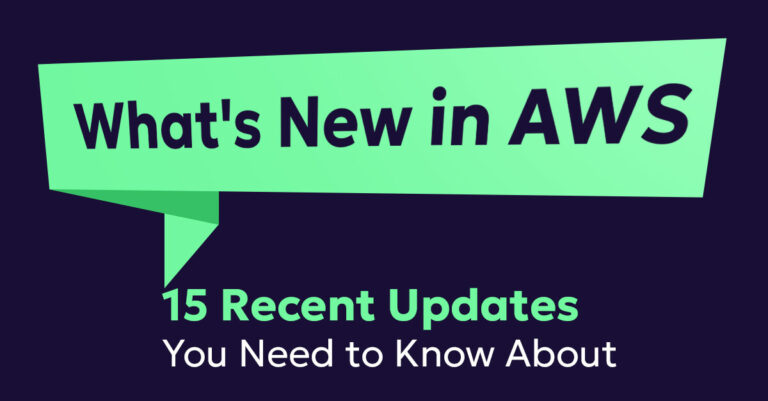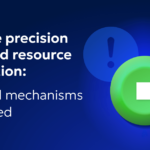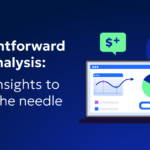
What’s new in AWS? 15 recent updates you need to know about
Amazon Web Services (AWS) is constantly rolling out updates to its expansive suite of services, aimed at enhancing user experience and optimizing performance. With dozens of updates released every month, ranging from minor feature adjustments to the introduction of brand-new services, sorting through them to grasp the significance of each can be daunting. Below, we delve into the most significant additions to the AWS portfolio from the past month:
Amazon EC2 C7gd, M7gd, and R7gd metal instances are now available
Amazon has expanded its EC2 family with the introduction of C7gd, M7gd, and R7gd metal instances. These new instances are designed to provide high-speed, low-latency local storage solutions, making them perfect for applications that require quick access to data stored on NVMe-based SSDs.
Amazon RDS IO2 Block Express offers sub-millisecond latency and 99.999% durability
This update to Amazon RDS introduces IO2 Block Express storage, which is engineered to support the most demanding database workloads by offering sub-millisecond latency and an impressive 99.999% durability. It’s an ideal solution for mission-critical applications that require the highest levels of reliability and performance.
AWS 7-Day Return Window for Savings Plans
AWS now offers a 7-day return window for Savings Plans, granting users enhanced flexibility to adjust or cancel their commitments if their needs change. This update underscores AWS’s commitment to providing cost-effective and adaptable solutions for managing cloud expenses.
AWS Cost Categories has a revamped user interface
AWS has redesigned the user interface for AWS Cost Categories, aiming to simplify cost tracking and allocation. This enhancement not only makes it easier for users to categorize and manage their AWS costs but also improves visibility into spending patterns, aiding in more effective budget management and cost optimization strategies.
Amazon EFS now supports 20 GiB/s throughput
Amazon Elastic File System (EFS) has been updated to support up to 20 GiB/s of throughput, accommodating the needs of high-performance workloads that require fast and scalable file storage. This increase in throughput ensures that applications can access and manipulate large datasets more efficiently, improving overall performance.
Amazon Timestream now supports InfluxDB
With the new support for InfluxDB, users can now easily migrate their InfluxDB workloads to Amazon Timestream. This integration facilitates enhanced data management and analysis capabilities, allowing users to leverage Timestream’s time-series database service for efficient storage and querying of time-stamped data.
AWS Compute Optimizer now supports 51 EC2 instance types
AWS Compute Optimizer has been updated to include recommendations for an additional 51 EC2 instance types. This expansion enables users to receive more precise suggestions for optimizing the performance and cost of their EC2 instances. By analyzing usage patterns, Compute Optimizer helps identify the best instance types and configurations for various workloads.
AWS Batch now supports multi-container jobs in the AWS Management Console
AWS Batch has introduced support for multi-container jobs within the AWS Management Console. This feature allows users to manage complex applications that involve multiple containers more efficiently, simplifying deployment and scaling processes for containerized workloads.
Reserved Instances now support Amazon Aurora PostgreSQL optimized reads
AWS has enhanced Reserved Instances to include support for Amazon Aurora PostgreSQL with optimized read capabilities. This update provides customers with cost-effective options for high-performance read operations, ensuring scalable and efficient database solutions.
Amazon EC2 C7gn metal instances are now available
The addition of C7gn metal instances to the Amazon EC2 lineup offers customers high-performance computing options with enhanced network and storage capabilities. These instances are particularly suited for workloads that demand high throughput and bandwidth, providing robust solutions for data-intensive applications.
AI recommendations and descriptions are now available for Amazon DataZone
Amazon DataZone now features AI-generated recommendations and descriptions, making it easier for users to manage and understand their data. This AI-driven approach enhances data discovery and governance, facilitating more informed decision-making and streamlined data operations.
AWS Compute Optimizer now provides EC2 rightsizing recommendations
The AWS Compute Optimizer has been updated to offer EC2 rightsizing recommendations, allowing users to optimize their instances for both performance and cost. This feature analyzes existing workloads to suggest the most efficient instance types and configurations, helping businesses to maximize their AWS investment.
AWS has launched a new Local Zone in Miami
The launch of a new AWS Local Zone in Miami extends AWS’s infrastructure closer to end-users, reducing latency and improving the performance of applications. Local Zones enable businesses to run latency-sensitive applications closer to their customers, enhancing user experiences.
Amazon EKS now supports additional Kubernetes versions
Amazon EKS has expanded its support to include additional Kubernetes versions, ensuring compatibility and flexibility for users managing Kubernetes workloads. This update allows users to leverage the latest features and improvements in Kubernetes, maintaining the efficiency and reliability of their containerized applications.
AWS Billing and Cost Management now supports data exports with AWS CloudFormation
AWS Billing and Cost Management has introduced the ability to export data using AWS CloudFormation, streamlining the process of managing and analyzing AWS spending. This feature provides users with a more automated and scalable approach to accessing detailed billing and cost data.









